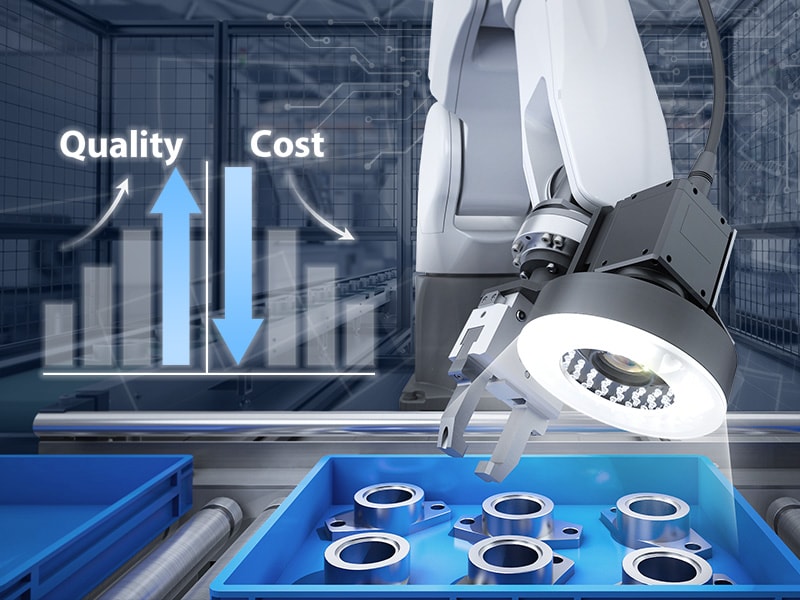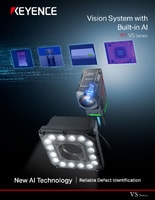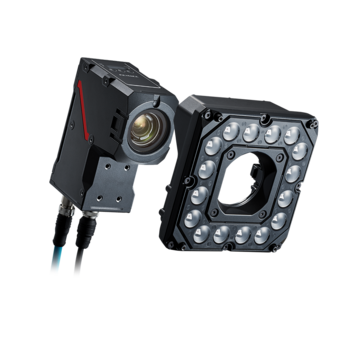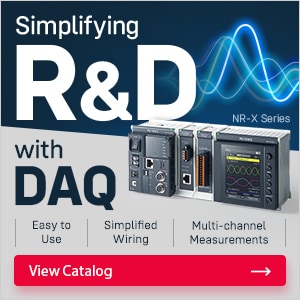Vision Systems
- Vision System with Built-in AI VS series
- Intuitive Vision System CV-X series
- Customizable Vision System XG-X series
- GigE camera and lighting for PC-based machine vision VJ series
- Inline 3D Inspection 3D Vision series
- 3D Vision-Guided Robotics 3D VGR series
- Line Scan Technology Line Scan series
- 2D Vision-Guided Robotics 2D VGR series
- LED Lighting CA-D series
- Lenses (for Machine Vision) CA-L series
- Machine Vision System Database VisionDatabase series
- 2D Measurement Inspection
- Optical Character Reading (OCR) and 1D/2D Code Verification
- Inline 3D Volume and Measurement Inspection
- Presence & Absence Inspection
- Flaw Detection
- 3D Vision-Guided Robotic Bin Picking
- High-Resolution Line Scan Cameras for High-Speed Imaging
- Automated Positioning and Alignment Systems Using Machine Vision
- Automotive
- Automation Equipment/Machine Building
- Electric Vehicles
- Medical Device Manufacturing
- Food/Beverage Packaging
- Semiconductor/Manufacturing Electronics
- Vision-Guided Robotics
- Solar
- Logistics
- Commodities
- Paper Manufacturing
- Machine Tools
- Electronic Device
- Printing
- Mining/Metals
- Fabric/Textile
- Tobacco
- Marine
- Aerospace
Affordable Automation: How Vision Inspection is Leveling the Playing Field

For years, machine vision was seen as technology only large manufacturers could access. Thanks to more cost-effective options, compact form factors, and AI-powered ease of use, low-cost vision inspection systems are now available to operations of all sizes without compromising performance.
Why Vision Systems Matter for Small Manufacturers
Smaller manufacturers face a difficult balancing act. Consistency and speed are critical, but budgets and headcount are limited. Traditional quality control methods often rely on visual inspection; however, fatigue, inconsistency, and human error introduce significant risks.
Low-cost vision inspection systems are shifting that dynamic. With simple integration, intuitive software, and compact smart cameras, it’s now possible to introduce automated quality checks without engineering support or extensive infrastructure. This makes machine vision inspection realistic for teams that previously couldn’t justify the investment.
Smaller facilities in niche industries can now compete on standards that once required enterprise-level automation.
We’re here to provide you with more details.
Reach out today!

What a Low-Cost Vision System Can Detect
Today’s low-cost machine vision cameras are surprisingly capable. Even entry-level systems can detect incorrect labels, surface scratches, misaligned parts, or dimensional defects. These units may be compact, but they handle complex tasks with precision and speed.
Line scan cameras are especially useful for inspecting webbed or cylindrical materials that move continuously (like foil, tubing, or wire), where a full image needs to be built one slice at a time. Standard 2D cameras, on the other hand, are better suited for capturing images of a whole part or a specific feature as it passes by. Some affordable systems now even offer depth detection, making it easier to handle parts with height variation or angled surfaces.
Whether the need is to verify inkjet codes, flaws on metal, or identify packaging flaws before shipment, a well-configured, low-cost vision system closes gaps that manual inspection can’t.
Key Features of Accessible Vision Solutions
Modern machine vision inspection systems combine imaging, lighting, processing, and software into single compact units. This means fewer components to manage and less time spent wiring or configuring.
Systems like the KEYENCE CV-X and VS Series offer guided setup, built-in troubleshooting, and visual programming that requires no coding. Teams can modify inspection logic in real time, fine-tune performance quickly, and adapt to part variation all without outside help.
Some smart cameras come with integrated AI, enabling systems to learn from sample images and make nuanced decisions. Smaller teams can now run powerful inspections without writing code or managing training data.
Discover more about this product.
Click here to book your demo.

Key Benefits for Packaging Lines
In high-throughput packaging environments, mistakes add up quickly. A missed fill level or an unreadable date code might not seem like much, but catching it before it leaves the line avoids downstream waste and delays. That reduces waste and keeps rework to a minimum.
For lines running multiple SKUs, low-cost vision systems simplify transitions as smart models equipped with AI can adjust to small part differences without needing manual tweaks. That saves time during changeovers and reduces the chance of operator error.
These systems also help with traceability. These systems automatically log results and check printed codes on the fly, making it easier to stay audit-ready without slowing the line down.
Real-World Use Cases
Small and mid-sized manufacturers are already seeing strong returns. One food facility installed a smart camera to catch underfilled packages and saw false rejects drop by 80%. A mid-tier auto parts supplier used a low-cost vision inspection system to guide robotic arms, cutting cycle time, and removing operator error.
In packaging, a producer running multiple SKUs utilizes AI-based product detection to automatically apply the correct inspection routine. This eliminates manual intervention during changeovers and reduces waste.
These examples show what’s possible with the right vision setup, even for teams with limited technical bandwidth.
The ROI Equation
The return on a low-cost vision system is often realized in weeks, not years. Inspections that once took seconds now happen in milliseconds. Products that once required rework now leave the line right the first time.
One manufacturer reduced inspection time from 60 seconds per part to just over two seconds, thereby reducing labor and increasing output. Another facility reduced missed defects by 30%, improving quality and lowering warranty risk.
Best Practices for Deployment
Success begins with clearly defining the inspection task, and for most applications, a smart camera with integrated lighting and processing capabilities is the most straightforward. These units reduce complexity and are easier to support over time.
Software matters just as much. Look for platforms that offer intuitive inspection creation, built-in diagnostics, and flexible result handling. Many systems now offer remote access and cloud monitoring, even for low-cost vision inspection setups.
Crucially, most of today’s solutions are designed to be deployed by in-house teams. Guided setup wizards and logic-based programming reduce learning curves and empower production teams to take ownership from day one.
Your Next Step Toward Smarter Manufacturing
Machine vision inspection systems are no longer reserved for enterprise-scale plants. Affordable vision inspection has opened the door to smarter automation for smaller manufacturers. It's no longer just about cutting costs; it's about identifying issues early and meeting growing demand, all at an accessible price.
These systems can start small, solve specific problems, and scale over time. With high detection performance, user-friendly interfaces, and no need for complex coding, they provide more reliable and efficient production.
Contact us to learn more about how our advanced technology can help take your business to the next level.
Contact Us
FAQs
Does Low Cost Mean Limited Detection Power?
Today’s low-cost machine vision cameras can detect complex defects and subtle variations with impressive accuracy.
How Quickly Can I See ROI?
Many facilities recover their investment within the first few months through labor savings, reduced scrap, and faster throughput.
Can Low-Cost Vision Systems Grow With My Production Needs?
Yes, scalable platforms like the KEYENCE VS Series support expansion without starting over.
Do I Need a Vision System Engineer?
No, most low-cost vision inspection systems are designed for use by production or quality teams, with intuitive interfaces and guided setup.
We’re here to provide you with more details.
Reach out today!

Related Downloads
Related Products
Applications
- 2D Measurement Inspection
- Optical Character Reading (OCR) and 1D/2D Code Verification
- Inline 3D Volume and Measurement Inspection
- Presence & Absence Inspection
- Flaw Detection
- 3D Vision-Guided Robotic Bin Picking
- High-Resolution Line Scan Cameras for High-Speed Imaging
- Automated Positioning and Alignment Systems Using Machine Vision
Industries
- Automotive
- Automation Equipment/Machine Building
- Electric Vehicles
- Medical Device Manufacturing
- Food/Beverage Packaging
- Semiconductor/Manufacturing Electronics
- Vision-Guided Robotics
- Solar
- Logistics
- Commodities
- Paper Manufacturing
- Machine Tools
- Electronic Device
- Printing
- Mining/Metals
- Fabric/Textile
- Tobacco
- Marine
- Aerospace



